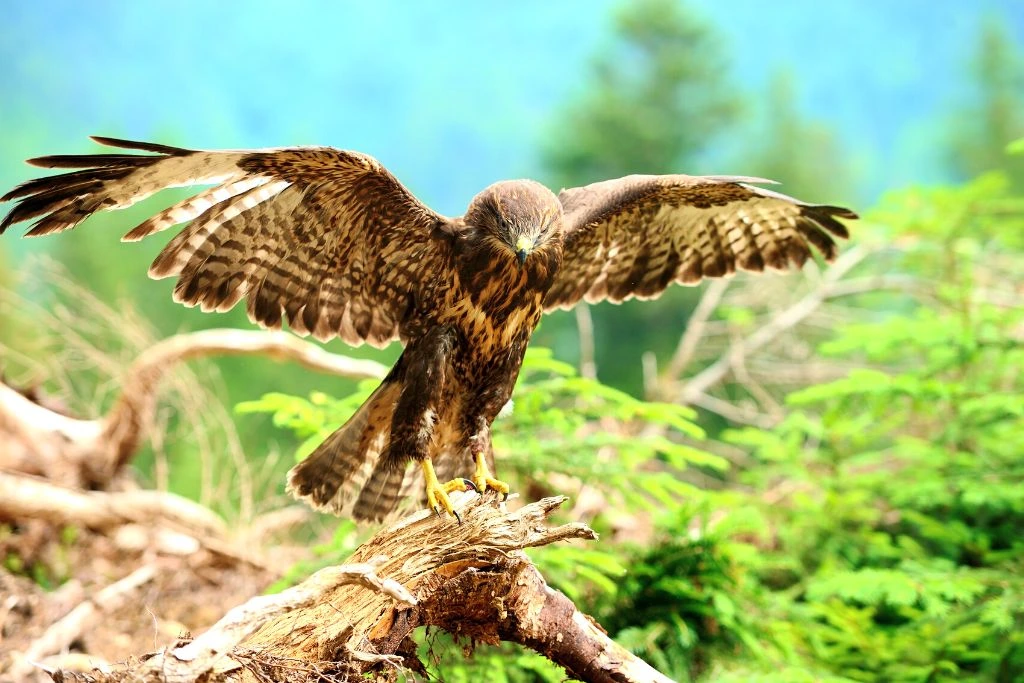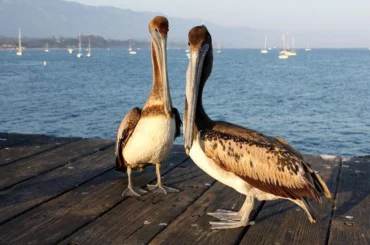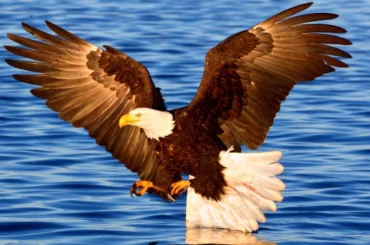Hawks are large birds of prey that are native to North America. They range from Canada to Mexico and south into Central America. While hawks may be present in other regions around the world, California is home to some of the best-known hawks in North America.
Here’s a list of California hawks you’ll likely see when you visit the Golden State.
1. Red-Tailed Hawk
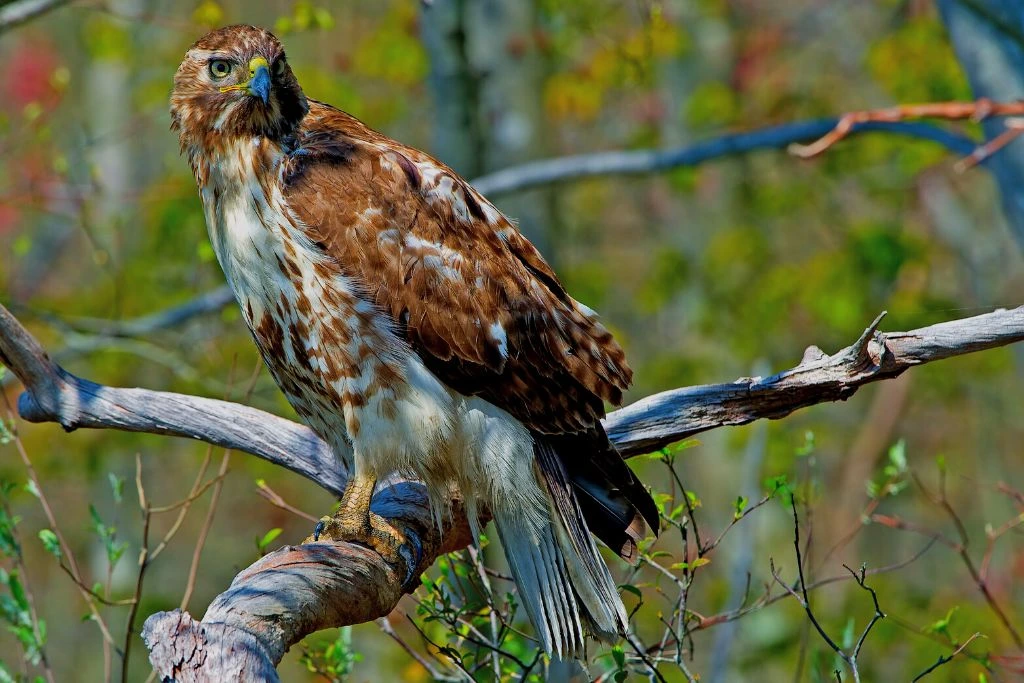
- Kingdom: Animalia
- Phylum: Chordata
- Class: Aves
- Order: Accipitriformes
- Genus: Buteo
- Species: Buteo jamaicensis
Red-tailed hawks (Buteo jamaicensis) are the most common hawk in California. They are found in open areas, such as grasslands, deserts, and forests. They have a red tail that helps them see their prey from above. Red-tailed hawks live throughout the Western United States, where they eat small mammals, like mice or rats; birds, like quail; snakes, lizards, insects (like grasshoppers), frogs, and other amphibians, like salamanders.
2. Ferruginous Hawk
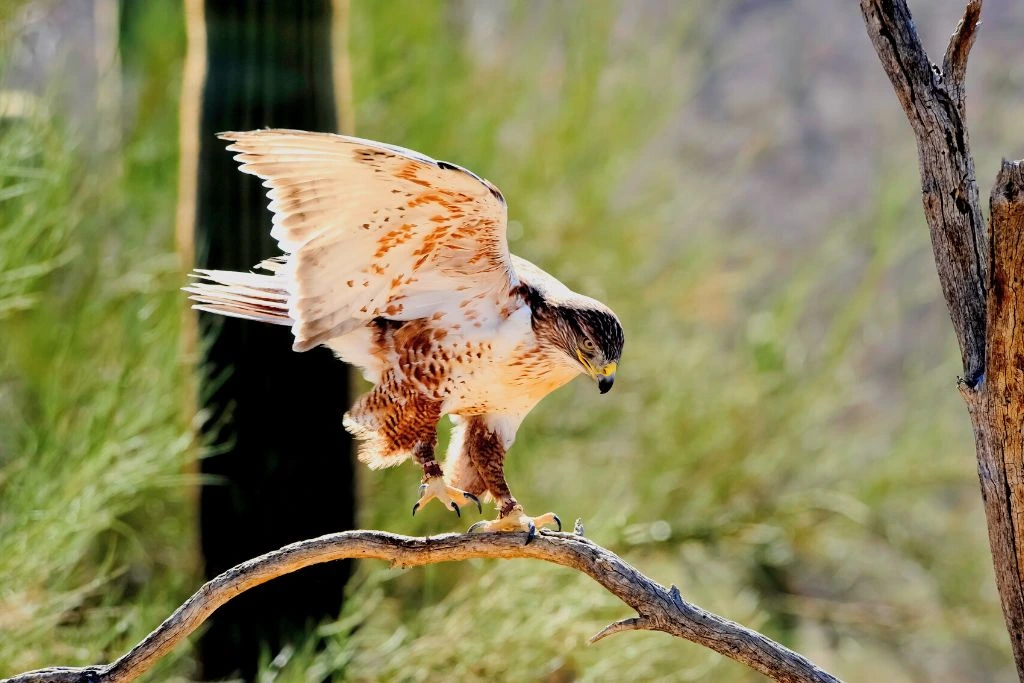
- Kingdom: Animalia
- Phylum: Chordata
- Class: Aves
- Order: Accipitriformes
- Genus: Buteo
- Species: Buteo regalis
The ferruginous hawk (Buteo regalis) is a medium-sized hawk with a dark back and white throat and underparts. It has a yellow bill and legs but can be distinguished from other hawks by its dark back and white throat. This species lives in open countries near water, where it can hunt small mammals, like mice or voles.
It nests in cavities, such as cliff ledges or holes under rocks that they dig itself into while building its nest. These hawks are notable for their regal appearance and got their “ferruginous” name for their rich and rusty shoulders, legs, and prominent gray heads.
The species also has a dark morph breed that sports a reddish-chocolate color. They are pretty rare to see.
3. Swainson’s Hawk
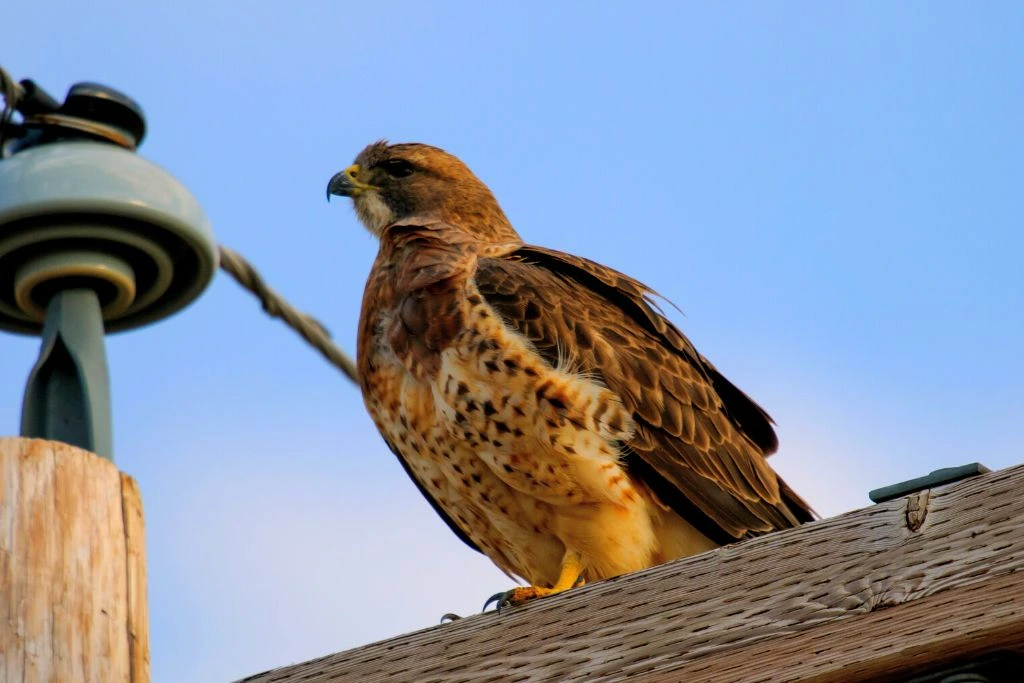
- Kingdom: Animalia
- Phylum: Chordata
- Class: Aves
- Order: Accipitriformes
- Genus: Buteo
- Species: Buteo swainsoni
Swainson’s hawk (Buteo swainsoni) is a large bird of prey with a long wingspan and brown body with white neck feathers. It is found in the Western United States, where it preys on small mammals and birds.
This hawk’s diet consists primarily of rodents, like mice, rabbits and squirrels, but they also eat other animals, such as snakes, insects, lizards, and even bats!
4. Zone-Tailed Hawk
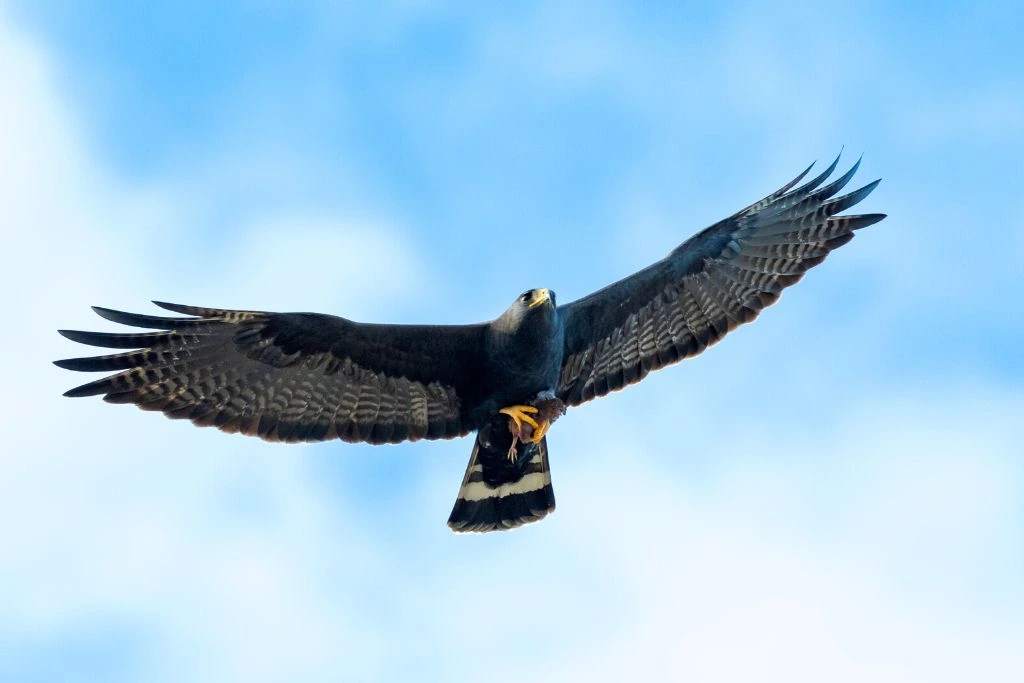
- Kingdom: Animalia
- Phylum: Chordata
- Class: Aves
- Order: Accipitriformes
- Genus: Buteo
- Species: Buteo albonotatus
The zone-tailed hawk (Buteo albonotatus) is a medium-sized bird that lives in the Southern United States. It has long wings and tail feathers, giving it its name. Zone-tailed hawks are brown on top with white underparts, light blue eyes, and a dark brown back.
This species builds nests from sticks and other plant materials in trees or shrubs near water sources where they can hunt for food and shelter from predators, such as coyotes and snakes (who may prey upon young birds). In addition to insects, like grasshoppers or beetles, they also eat rodents, which live near their homes. These small mammals make up much of their diet during breeding season when young chicks need extra protein intake due to rapid growth rates.
Females, during their egg-laying periods, also prefer this diet due to high levels of hormones. During this time period you may see them hunting at night around your property since they do not fly very well, so they’re often seen along roadsides looking for prey.
5. Rough-Legged Hawk
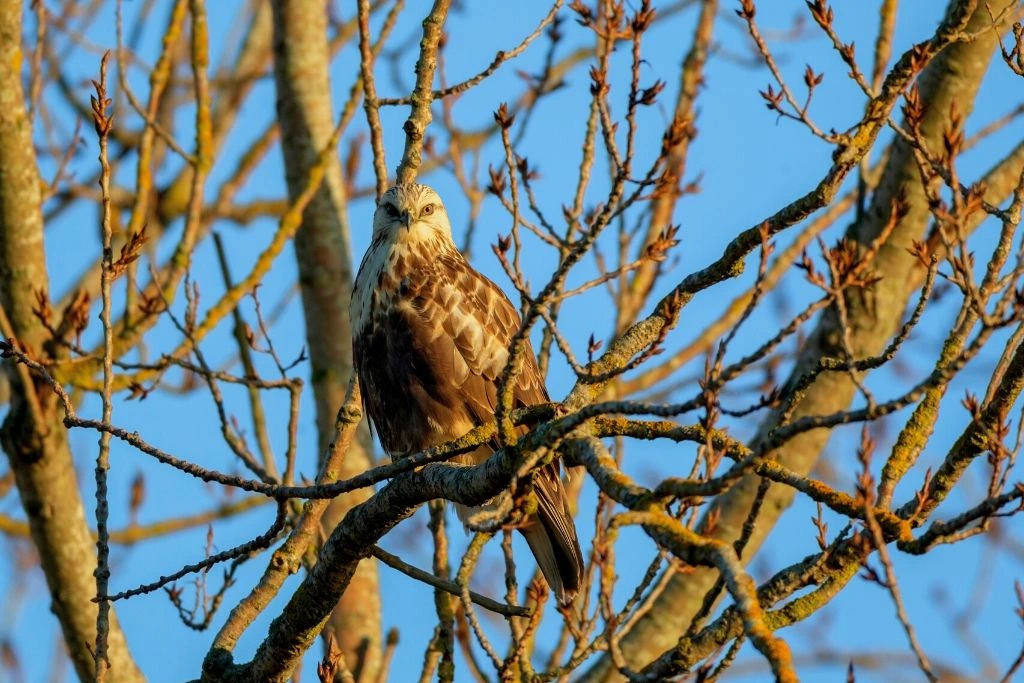
- Kingdom: Animalia
- Phylum: Chordata
- Class: Aves
- Order: Accipitriformes
- Genus: Buteo
- Species: Buteo lagopus
The rough-legged hawk (Buteo lagopus) is one of the most prominent hawks in North America, with an average wingspan of six feet. It has an extensive range and population across North America but is currently threatened by habitat loss and misuse. In California, there are estimated to be around 100-300 individuals living within this range.
This species is mainly found in open areas, such as grasslands or deserts, where it can hunt for prey independently without needing help from other birds or animals. However, it also uses artificial structures, such as buildings. This behavior is most notable during migration season, which lasts from March through May each year.
6. Sharp-Shinned Hawk
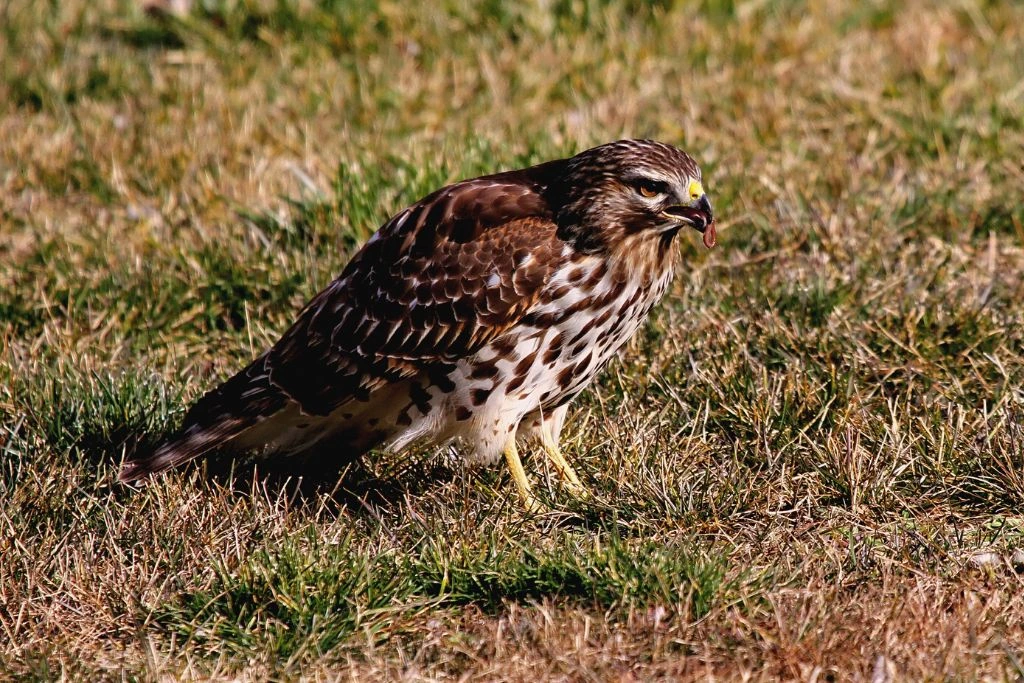
- Kingdom: Animalia
- Phylum: Chordata
- Class: Aves
- Order: Accipitriformes
- Genus: Accipiter
- Species: Accipiter striatus
The sharp-shinned hawk (Accipiter striatus) is a bird of prey that you can find in California. It’s the smallest of all hawks and lives on both land and water. These birds are notable for having slender accipiter, round wings, and lengthy square-tipped tails.
The younger ones will sport brown above, lighter underneath, and dark streaking. As they age, the brown above will become grayish, and the dark streaking will become rufous barring.
Sharp-shinned hawks often migrate alone, with a buoyant flight pattern in high winds.
The sharp-shinned hawk hunts at night, perching then swooping down to catch its prey. It may eat anything from rodents to snakes and lizards, but its favorite food is fish (especially catfish).
7. Cooper’s Hawk
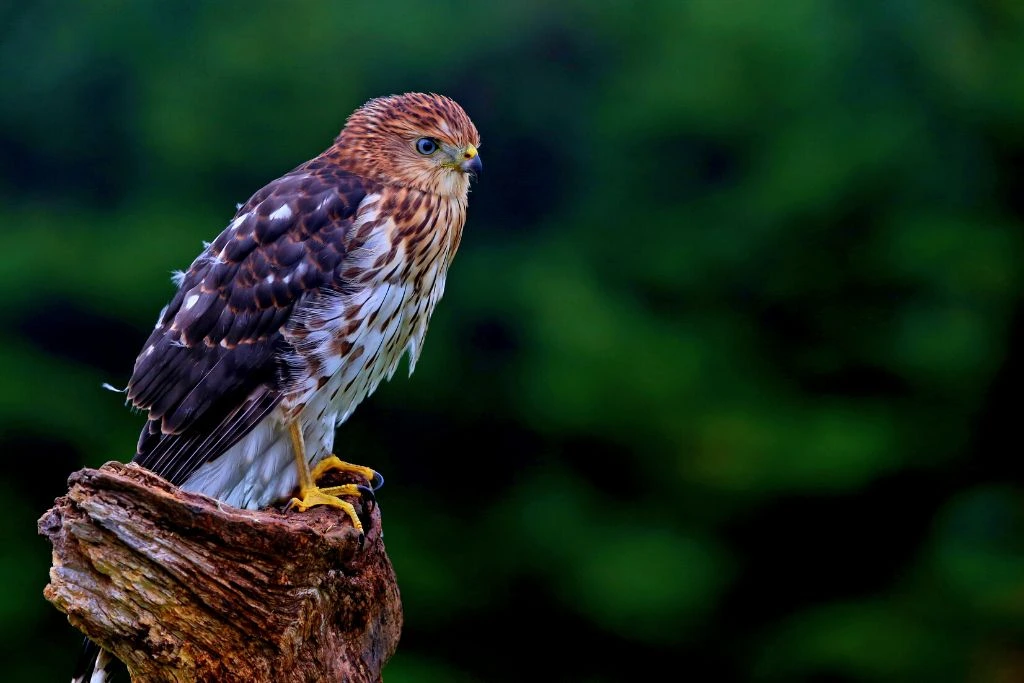
- Kingdom: Animalia
- Phylum: Chordata
- Class: Aves
- Order: Accipitriformes
- Genus: Accipiter
- Species: Accipiter cooperii
The Cooper’s hawk (Accipiter cooperii) is a raptor. It’s found in California but not just limited to the Western United States. You can find these hawks in Southern California, parts of North America, from Canada down through Mexico, and into Central America and South America.
Cooper’s hawks are brownish-gray birds with black wings and tails. Their legs are also dark brown or blackish in color. One way you might know if you’re seeing one of these hawks is if it has white patches on its face or neck—these are called “mask” markings due to how they look like someone wearing an old-fashioned mask.
8. Northern Goshawk
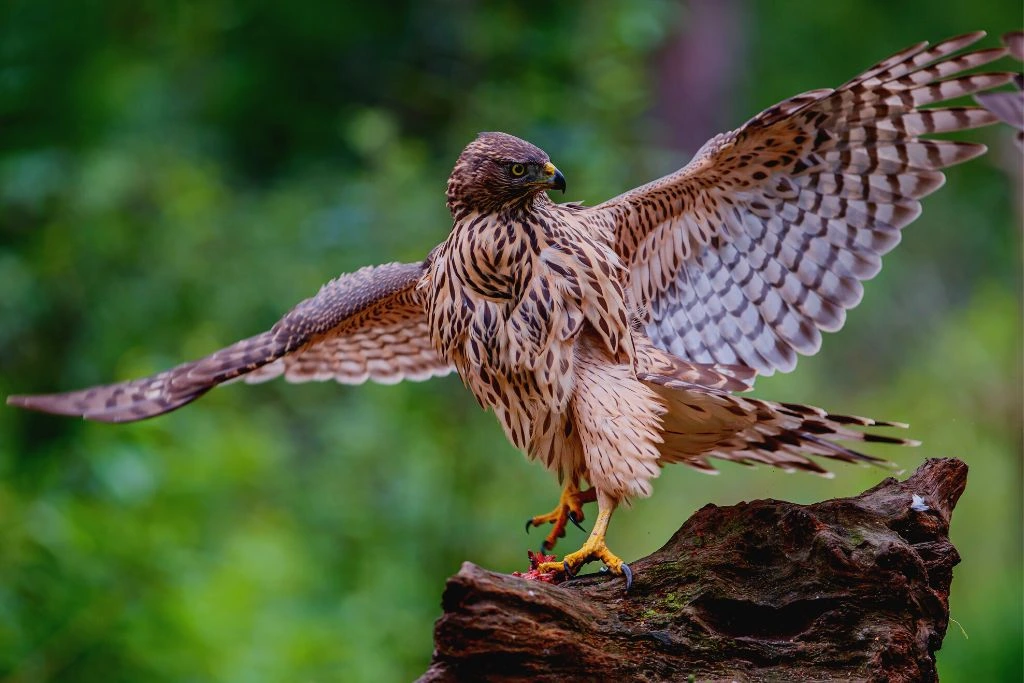
- Kingdom: Animalia
- Phylum: Chordata
- Class: Aves
- Order: Accipitriformes
- Genus: Accipiter
- Species: Accipiter gentilis
The northern goshawk (Accipiter gentilis atricapillus) is a medium-sized raptor with black and white feathers, which gives it a stealthy appearance. It has large eyes that give it excellent vision for hunting prey.
The northern goshawk can be found in many parts of North America, including California, Michigan, Minnesota, and Wisconsin. The habitat for this bird consists mainly of open areas or forests where they can hunt small mammals, like mice or voles, at night when they are inactive during the day (Kubo & Koyama 2007).
The diet of this species includes small mammals, such as mice and rats that live under rocks or logs during winter months. However, they still move into trees when temperatures warm up enough, so they are only preyed upon once springtime comes around again the following year.
9. Red-Shouldered Hawk
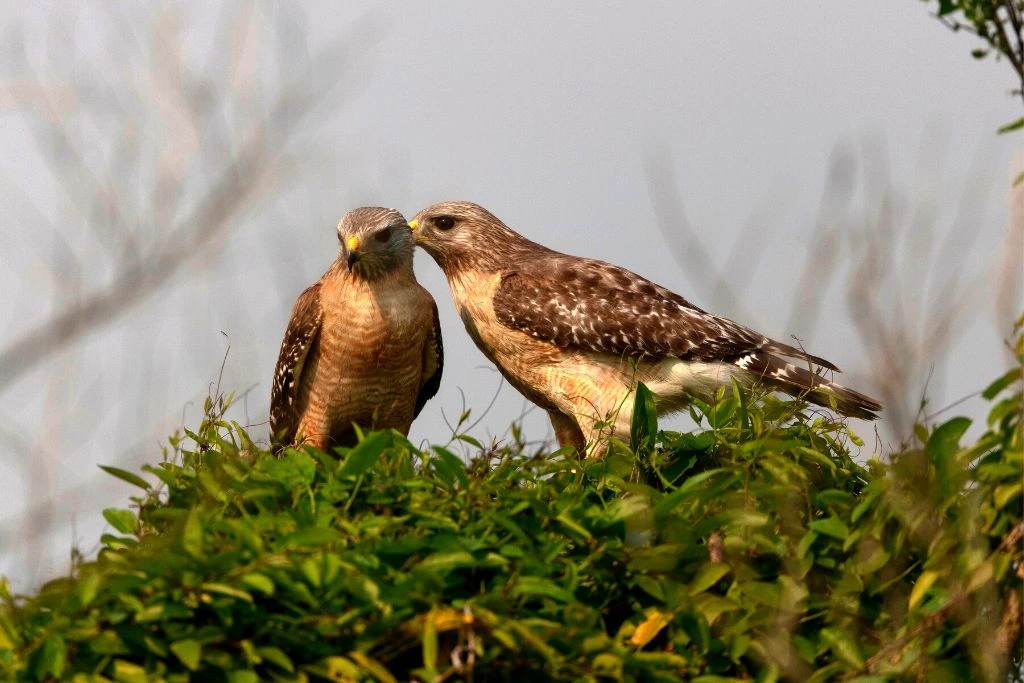
- Kingdom: Animalia
- Phylum: Chordata
- Class: Aves
- Order: Accipitriformes
- Genus: Buteo
- Species: Buteo lineatus
The red-shouldered hawk (Buteo lineatus) is one of the most common hawks in North America. They are a medium-sized bird with a wingspan reaching up to 2.5 feet (0.75 meters). They have dark brown feathers on their backs and white wings with black edges. Their underbelly is light gray or pinkish yellow.
The red-shouldered hawk eats small animals, like mice or squirrels, and birds, like young vultures, if they’re hungry enough.
Did you know that Cherokees believe that red-shoulder hawks are messengers of vision? That’s why when they see one, whatever thought they have at the time will manifest in their lives.
10. Northern Harrier
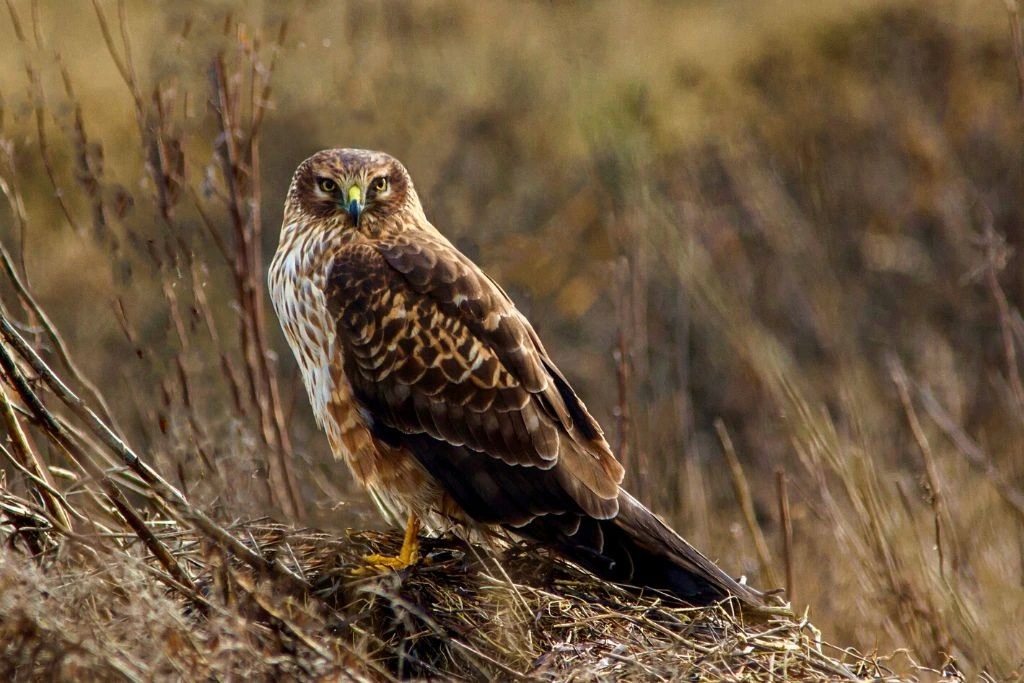
- Kingdom: Animalia
- Phylum: Chordata
- Class: Aves
- Order: Accipitriformes
- Genus: Circus
- Species: C. hudsonius
The northern harrier (Circus Hudsonius) is a large bird of prey that lives in the north, including California. It’s easily recognizable by its long, thin wings and legs (the long tail can also help balance). You’ll see this bird flying at high speeds and diving into the water to catch fish or other food sources.
If you’re lucky enough to spot these hawks of Northern California, you might be interested to know that northern harriers are excellent swimmers. They know how to use their long-pointed wings. If possible, try not to get in its way while swimming.
11. Broad-winged Hawk
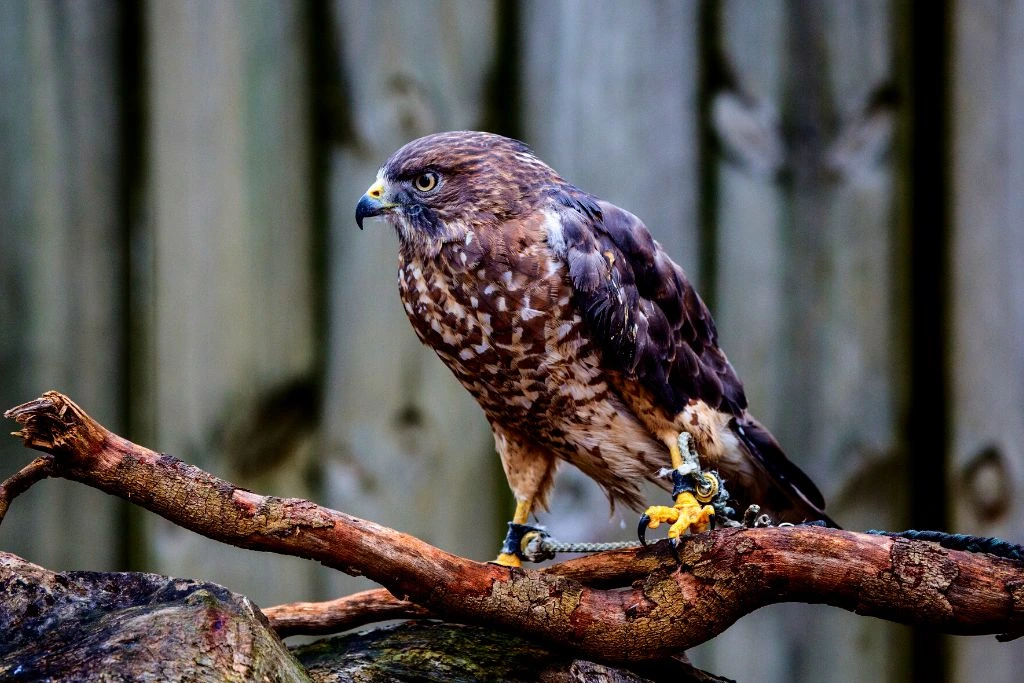
- Kingdom: Animalia
- Phylum: Chordata
- Class: Aves
- Order: Accipitriformes
- Genus: Buteo
- Species: Buteo platypterus
The broad-winged hawk (Buteo platypterus) is a widely distributed species found throughout California. In fact, they are the most common bird of prey in the state. This hawk has a wingspan of 3.5 feet, which means it’s one of the largest hawks on earth. The white belly and dark tail distinguish this species from other broad-winged hawks.
This bird preys on small mammals as well as birds, including other raptors like sharp-shinned hawks or Cooper’s hawks. But it does not typically eat large game, such as deer or raccoons, due to its small size.
Broad-winged hawks live up to 20 years in captivity but only about ten years in nature. One of the main reasons is the limited availability of nourishment during winter. During the cold season, there aren’t many small mammals around anymore since they’ve all been eaten by predators, like coyotes and foxes, instead.
12. Gray Hawk
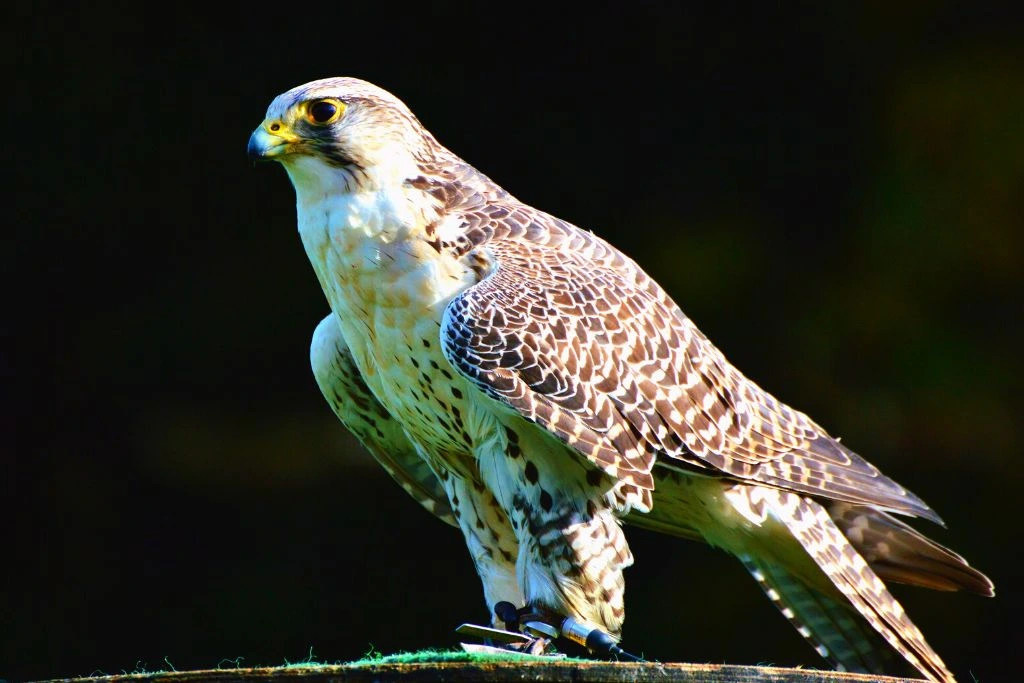
- Kingdom: Animalia
- Phylum: Chordata
- Class: Aves
- Order: Accipitriformes
- Genus: Buteo
- Species: Buteo plagiatus
The gray hawk (Buteo plagiatus) is a medium-sized hawk seen throughout Western United States. This species is found in California, Oregon, Washington, and Montana. They have fairly long tails, which gives them an accipiter resemblance. When they are perched, they have long legs, and the females are much bigger than the males.
Adult gray hawks have barred chests and are pale gray birds that also have black and white tails. They have dark wingtips, white undertails, faces with a bold pattern, white cheeks, and a dark stripe that separates the eyes and eyebrows.
Gray hawks usually perch below the forest canopy to search for reptilian prey. These birds catch prey quickly with short flights through tree trunks or close to the ground. They do their hunting in the early afternoon with flight patterns lower to the ground compared to other raptors.
These birds have a restricted range in the U.S. and live in savannahs, forest edges and clearings, and thorn-scrub woodlands. They like to build their nests with cottonwood, willow, and mesquites near streams and rivers.
13. Common Black Hawk
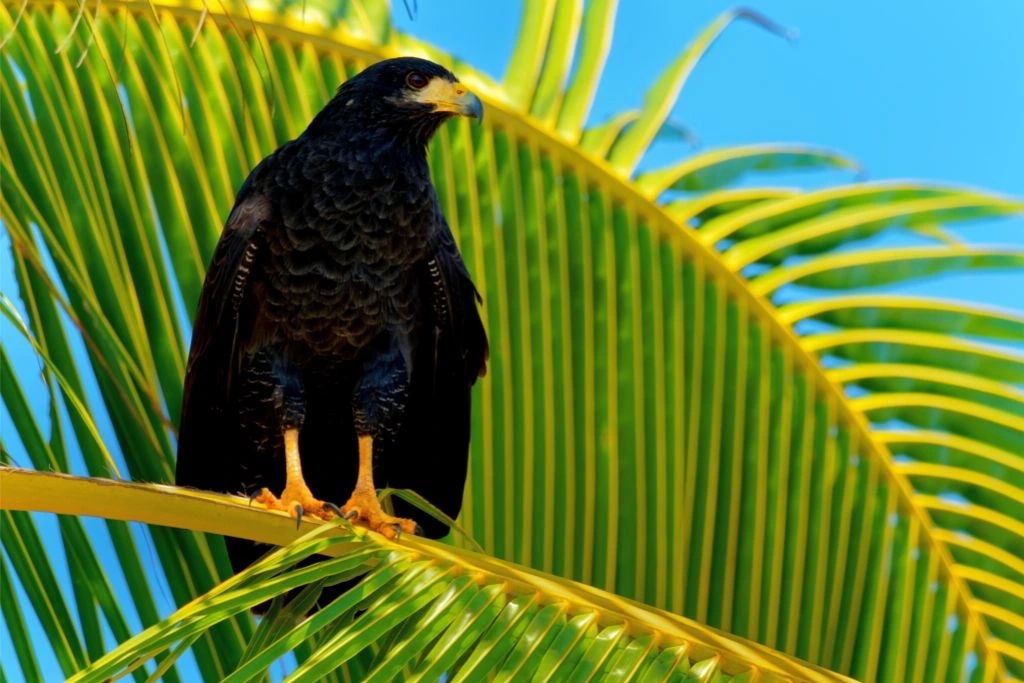
- Kingdom: Animalia
- Phylum: Chordata
- Class: Aves
- Order: Accipitriformes
- Genus: Buteogallus
- Species: Buteogallus anthracinus
The common black hawk (Buteogallus anthracinus) is a large, dark-colored bird that has a long tail and neck. Its wings are rounded but not as broad as those of other hawks.
This species is common in California, Oregon, and Washington. They often live near rivers or lakes where they hunt for fish and other animals, like frogs or crayfish.
They mostly eat small mammals but also eat birds if they are available (like crows). It will sometimes catch small rodents by chasing them down with its talons until the animal runs into a bush, where it hides from view until its prey runs out from under cover again. It’s often a dangerous situation since predators, such as cats, may start attacking these small animals once they’re spotted.
California and Its Variety of Hawks
California is a good place for hawks because there are many different types of habitats. Hawks can live in forests, grasslands, and desert areas, like Joshua Tree National Park and Death Valley National Park. Many different kinds of birds live here, from Canadian geese to black-billed magpies to American dippers. All species make California an attractive place for birds, and these are some of the California hawks’ identification you should know.
In addition to having so much variety in its natural environment, California also has a rich history and wildlife.
California is a diverse state, home to many different species of birds. Many of these hawks live in the state’s coastal areas, but some are also inland. We hope this article has provided some insight into what each one looks like so you can enjoy watching some California hawks while out on your next hike or camping trip!

